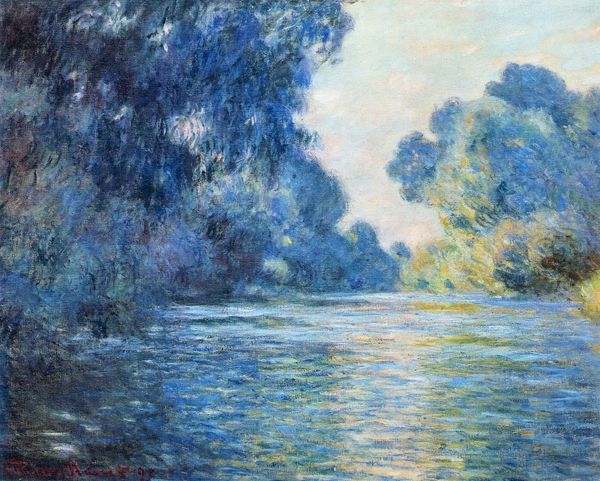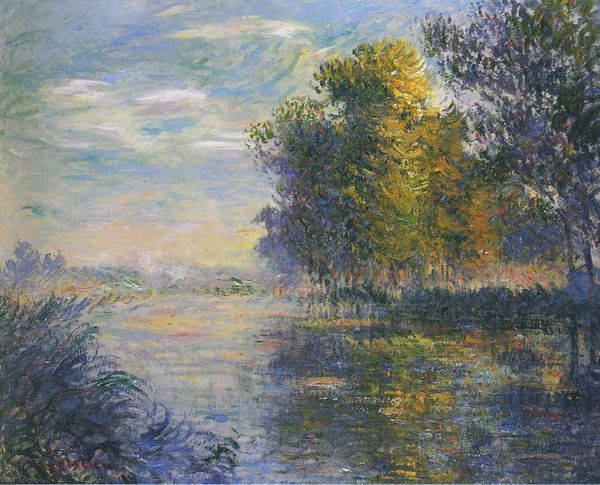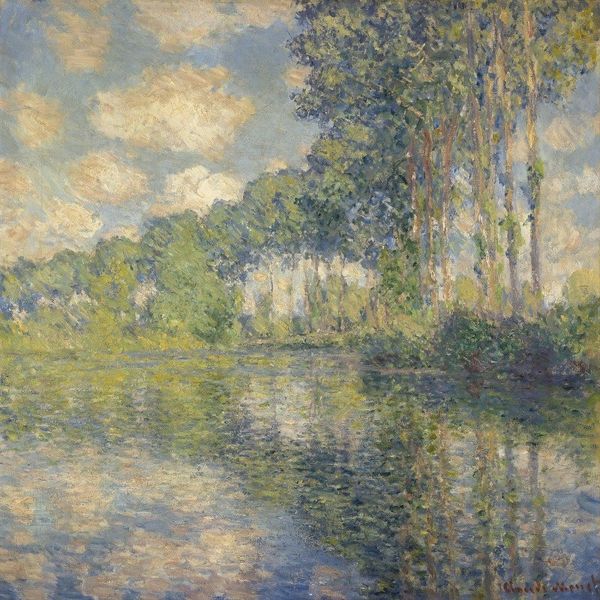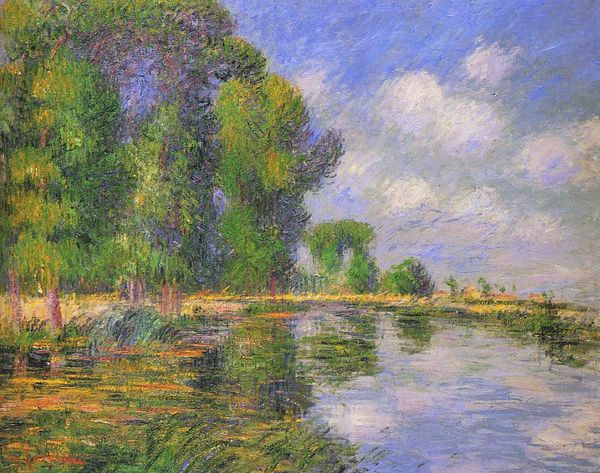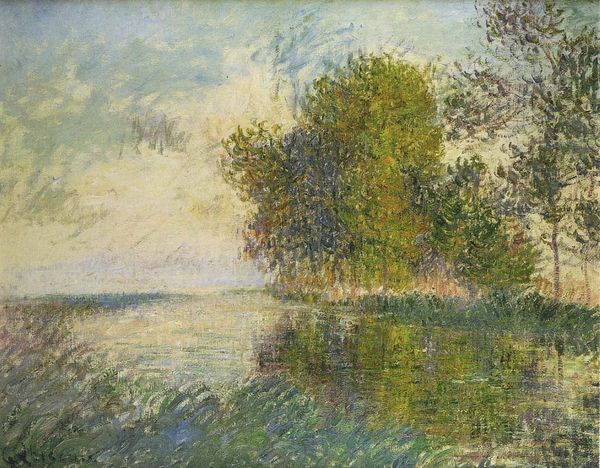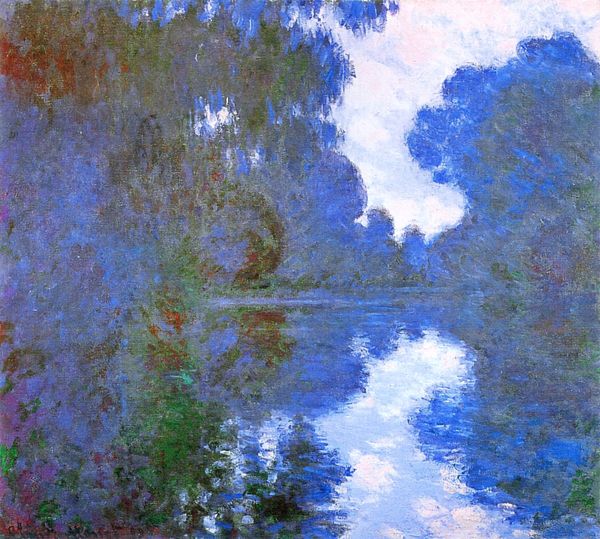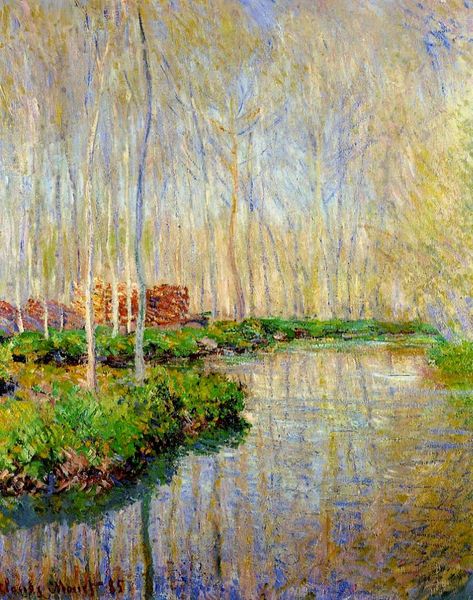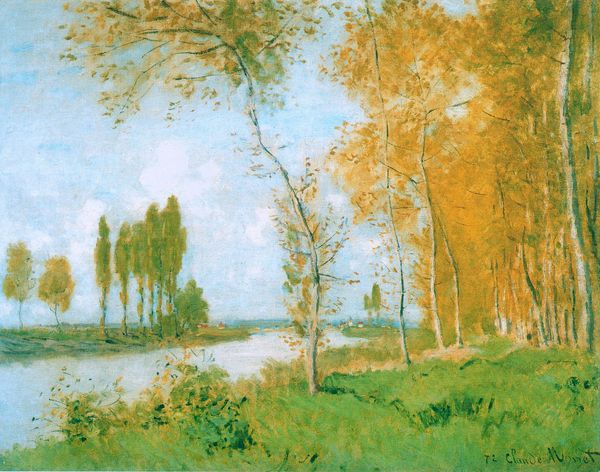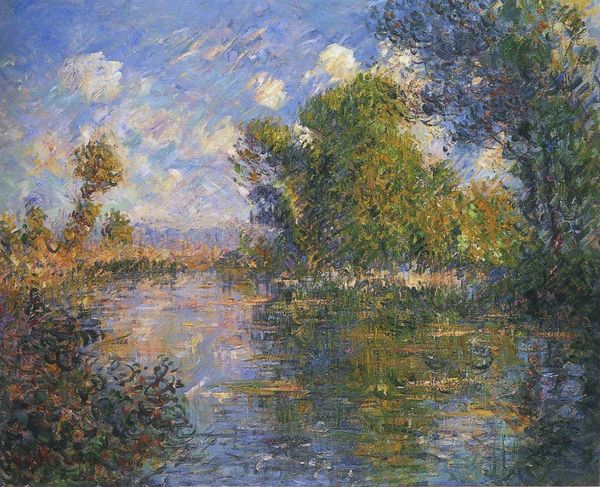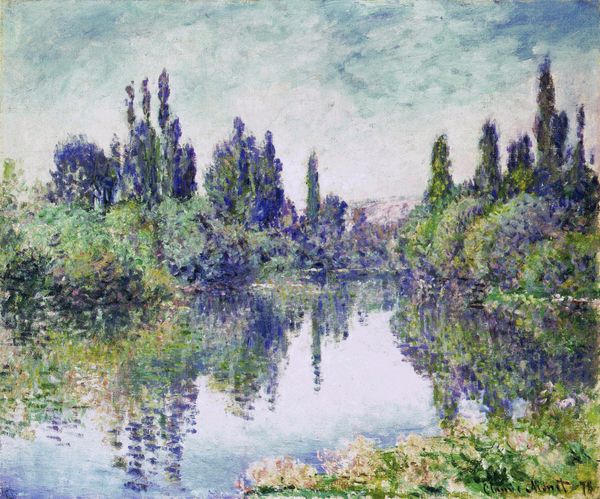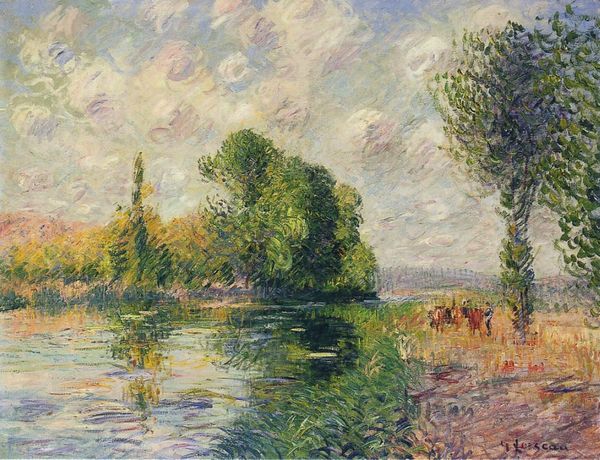
Copyright: Public domain
Curator: Before us hangs Claude Monet's "Bend in the River Epte," completed in 1888, an excellent example of his plein-air technique rendered in oil paint. Editor: My word, it practically vibrates! You can almost hear the rustle of leaves and the gentle lapping of the water. It’s… intensely alive. Curator: Note how the composition eschews a traditional focal point. Monet dissolves form through the optical mixing of color, presenting a more holistic experience of the landscape. Editor: That's a fancy way of saying he throws a party of light and color onto the canvas. Seriously, look at the water; it's not just "blue." It's a mosaic of blues, greens, hints of the trees… like a shattered mirror reflecting a dream. Curator: Indeed. Consider the structural implications of the repeated verticality of the trees against the horizontal flow of the river. It's a deliberate play between stasis and movement, anchoring the fleeting nature of the impression. Editor: I get it, I get it... but for me, it’s less about the 'structural implications' and more about the gut feeling. It smells like fresh grass and feels like sunlight on skin. It feels deeply…French countryside idyll. Curator: The subjective experience certainly has its place, however, we must analyze the artist's intention through careful observation of form and technique. The use of short, broken brushstrokes, for instance, is paramount to achieving this atmospheric effect. Editor: Agreed. And his particular brand of mad genius made him abandon the academy rules… which is, let's admit, probably why this still blows minds today, 130-odd years later. Rules shmules, give me emotional color and a good view any day! Curator: I appreciate that you see that; Monet's revolution certainly shaped subsequent landscape paintings. To observe such effects closely truly encapsulates the beauty of the style of plein-air works. Editor: Yes, if I can just sum it up. Sometimes a painting isn't just about 'trees' and 'water'. It can be about sunlight, memories, and the very act of seeing. Curator: A very insightful assessment for capturing something as simple and lovely as nature and abstraction mixed well to make, if not change, artistic perspectives in viewing art.
Comments
No comments
Be the first to comment and join the conversation on the ultimate creative platform.
